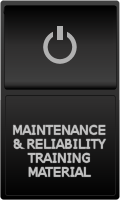Enquiry Form
Submit the form or
OEE or Overall Equipment Effectiveness Reports
Automated Capturing & Recording of Availability Data
Moving Beyond Manual Data Collection
& Manual Data Compilation
Overall Equipment Effectiveness (OEE) continues to gain acceptance as an effective method to measure production floor performance. Capturing and recording accurate production floor information is critical for producing reliable OEE Reports.
A number of production floors are utilizing manual methods of data collection for producing OEE report. This approach leaves room for both inconsistencies and inaccuracies. With manual data collection, there is usually a second step of manually compiling the data. This is most commonly accomplished by entering in the information into spreadsheets. This manual compilation step also leaves room for both inconsistencies and inaccuracies.
Another disadvantage to manually collecting data for your OEE reports, like with many maintenance and production improvement plans, is sustainability. The more task intensive an improvement plan is, the more likely priorities will change and the OEE initiative will fade away. With an automated data collection system, sustainability is no longer an issue. Once in place the automated OEE reporting stays in place and you need only act on the results.
There are cost effective automated data collection alternatives to manual data collection that significantly improve the accuracy of OEE reports. Automated capturing and recording of "Availability Information" will be covered in this article. Future articles will address the automated data collection of Performance Rate and Quality Rate.
OEE
OEE = Availability X Performance Rate X Quality Rate
Availability - Percent of scheduled production (to measure reliability) or calendar hours 24/7/365 (to measure equipment utilization) or equipment or line status (to measure ability to produce), that equipment or a production line is available for production.
Note: Measures the percent of time that the equipment can be used (usually total hours of 24-7-365), divided by the equipment uptime (actual production).
Performance Rate - Percent of parts produced per time frame, of maximum rate OEM rated production speed at. If OEM specification is not available, use best known production rate or a standard production rate can be established.
Note: Performance efficiency is the percentage of available time that the equipment is producing product at its theoretical speed for individual products. It measures speed losses. (i.e. inefficient batching, machine jams)
Quality Rate - Percent of good sellable parts out of total parts produced per time frame. Note: Determining the percent of the total output that is good. (i.e. all products including production, engineering, rework and scrap.)
Example: 50% Availability (0.5) x 70% Performance Rate (0.7) x 20% Quality Reject Rate (results in 80%(0.8) acceptable) = 30% OEE (Please see www.DowntimeCentral.com/OEE_TEEP.htm for a free online calculator to practice with.)
Defining What Is Availability
One of the first steps in initiating OEE reporting is defining the parameters
for the elements of OEE for the individual piece of equipment, production
line or the entire factory. That is clearly defining, documenting and
communicating why a piece of a piece of equipment or a production area
is unavailable for producing product.
There are three basic approaches to defining availability. The approaches are the percent of scheduled production, calendar hours, and equipment or line status. The schedule production approach defines availability by the production schedule for a piece of equipment, a cell or an entire production line. The calendar hours defines availability as the total time available to produce product which is usually 7-24-365. The equipment or line status approach defines availability in terms that production line or piece of equipment is in a state to produce product. All three approaches are valid approaches. The percent of scheduled production and calendar hours provide a broad view of availability while the line status approach is a much more defined view.
Some examples to consider as causes for unavailability is power to piece of equipment or does the production station have personnel in place. The above two causes may not be enough to define the reason for unavailability. You may need to add data inputs recording if there was materials in place or the status of the infrastructure support (such as air pressure for air driven tools and equipment) as monitoring points to determine if a piece of equipment, a cell or an production line is available to produce a product. Availability must be defined for each area or piece of equipment that will have OEE reports. In some of the instances there will be more than one element that needs to be monitored to determine if that piece of equipment or area is considered available.
Automated Data Collection
Setting a goal of capturing availability status information with no manual
data collection or manual compilation for OEE calculations is the first
step in improving both the accuracy of OEE reports as wells as reducing
the cost to produce the reports. Start with defining what affects availability
for various areas of a production facility. Identify the specific data
collection points that will affect availability for a given area or unit
of equipment. In many cases there are data collection points already
in place. For those monitoring points, you need only to retrieve the
existing data. In other instances, a data collection monitoring device
will need to be installed.
For installing new data collection points, there are available a variety of inexpensive sensors that once installed, can capture the measurement of numerous parameters. These sensors can detect flow rate, weight, quantity, motion activity, phases of electrical power as wells as many other items. The sensors usually come with normally open or normally closed switch contacts. These switch contacts will serve as the data collection points for automated data collection.
Using sensors with switch contact outputs for most monitoring situations are probably the easiest approach for capturing availability data. To monitor equipment starting with power switches and other functions of equipment, it is often the case of adding an extra set of inexpensive contacts to an existing switch on the equipment.
There are other means to capture activity status information including embedded equipment control software and equipment monitoring software that can capture the parameters for availability. What must be factored into the monitoring approach is that each monitoring point must include a time and date stamp.
The data collected from the monitoring points must be transmitted to a database for data retention and reporting. The database that captures and records the status information can be a commonly available P/C database packages such as Microsoft Access®. It is critical that all data points recorded must include time, date and location stamps to support the development of OEE reports. Database report writers can be used to extract the information to produce OEE reports.
In addition to custom in house database systems, there are available integrated data collection systems with application software packages with complete OEE Reports. These systems and reporting can be tailored to each individual facility's requirements.
The Wireless Connection
The implementation of the wireless LAN or other wireless technologies to
capture and transmit availability data greatly enhances the timeliness,
utilization and flexibility of the data collection system. Hard wired
systems over time, limit the functionality of a data collection system.
In the past wireless technologies did not provide the high level of reliability
that is required for factories, leaving the hard wired systems as the
only alternative. That is no longer true especially with the introduction
of the wireless LAN 802.11g standard and advanced 900 MHz technology.
Wireless data collection and transmission systems provides for easy reconfigurations
of changing production floor layouts or changing production flow activity.
A number of off-the-shelf production floor wireless data collection systems
are available for use on the production floor.
Cost Justification
The implementation of an automated data collection system with an integrated
database provides immediate financial returns. The labor cost associated
with manual data collection on production lines by production personnel
and the manual compilation of the data to calculate OEE are eliminated
with an automated system. The accuracy and integrity of the source data
is significant improved. With more accurate OEE reports you will make
better financially feasible decisions that will result in even greater
savings. The timeliness of the OEE reports themselves are also significantly
improved with automated data collections. In most cases, the OEE Reports
are available for review the same date as the final element of information
is captured.
About the Author: Bob Giese is President of VersaCall Technologies Inc. which as been implementing wireless factory floor monitoring and communications since 1995. To learn how a wireless system would benefit your location e-mail sales at versacall.com or visit www.versacall.com.
Article reproduced with kind permission of the Business Industrial Network





